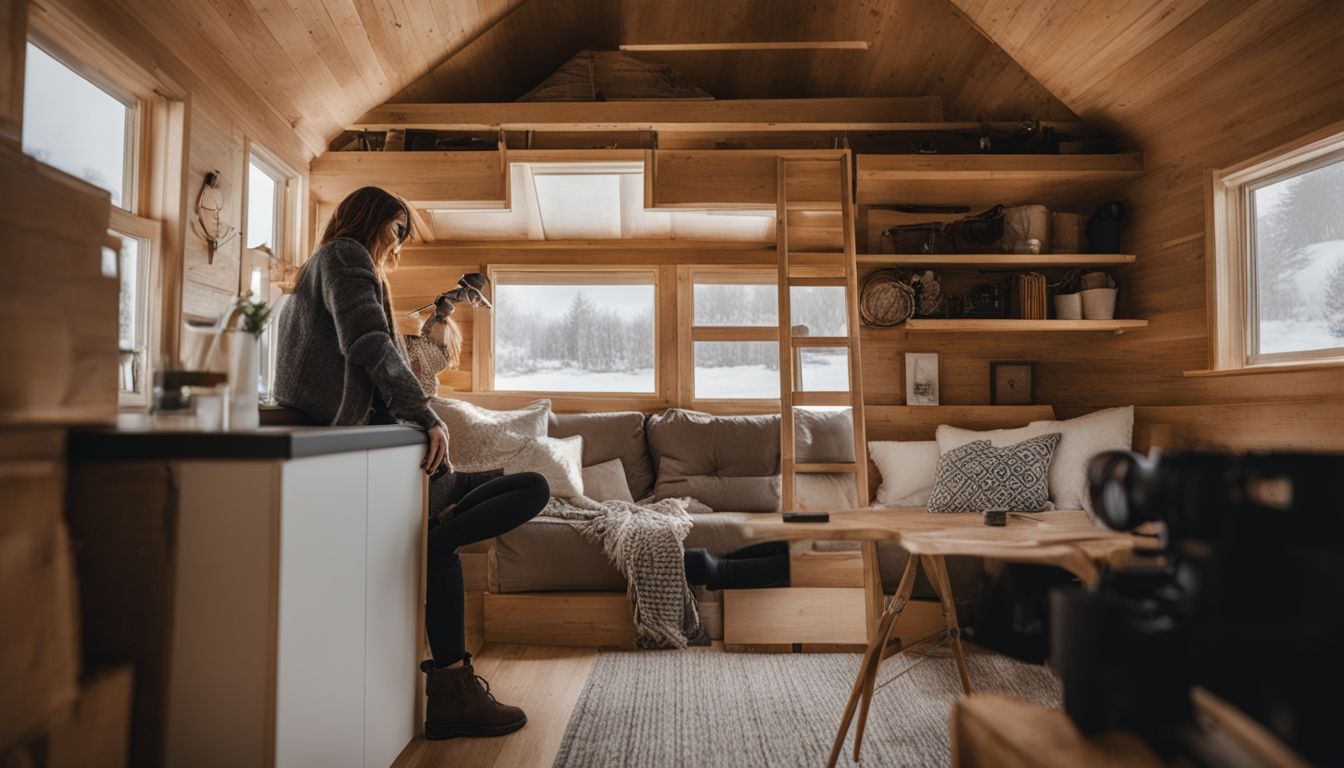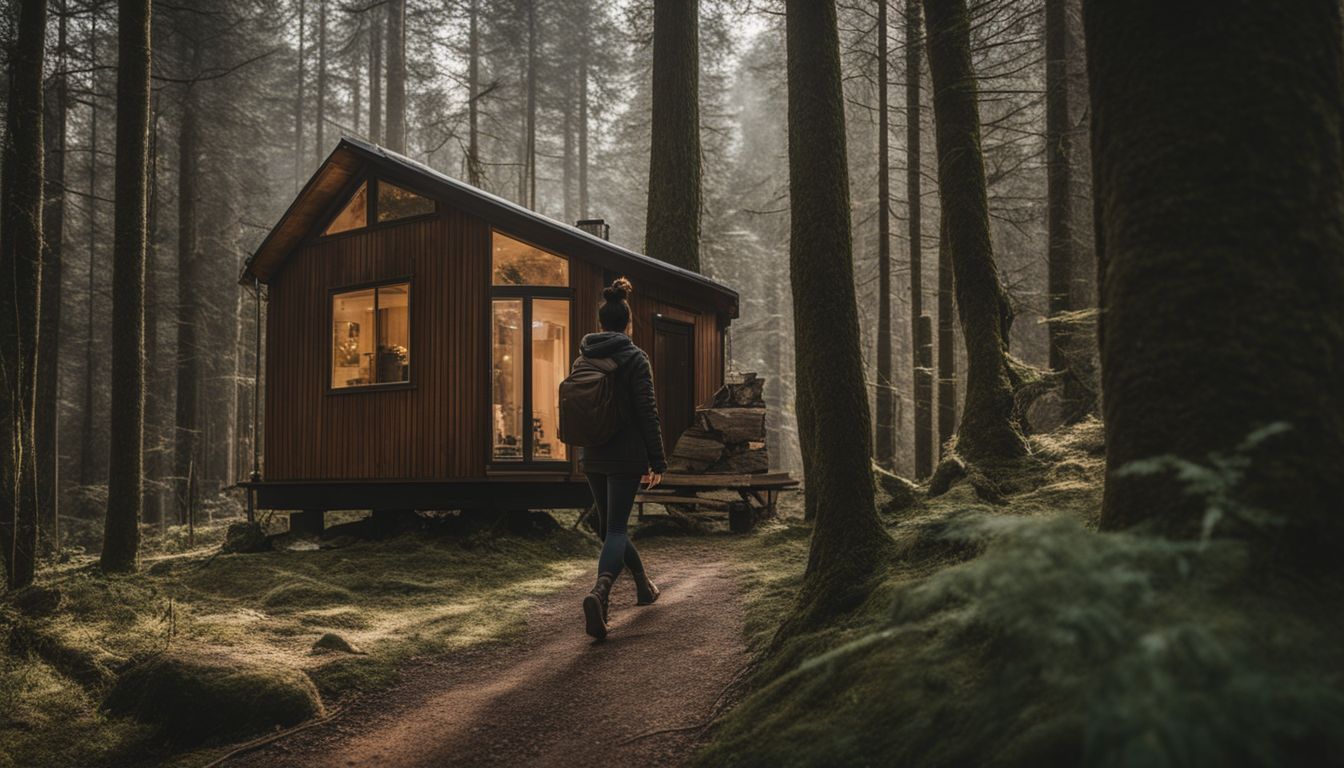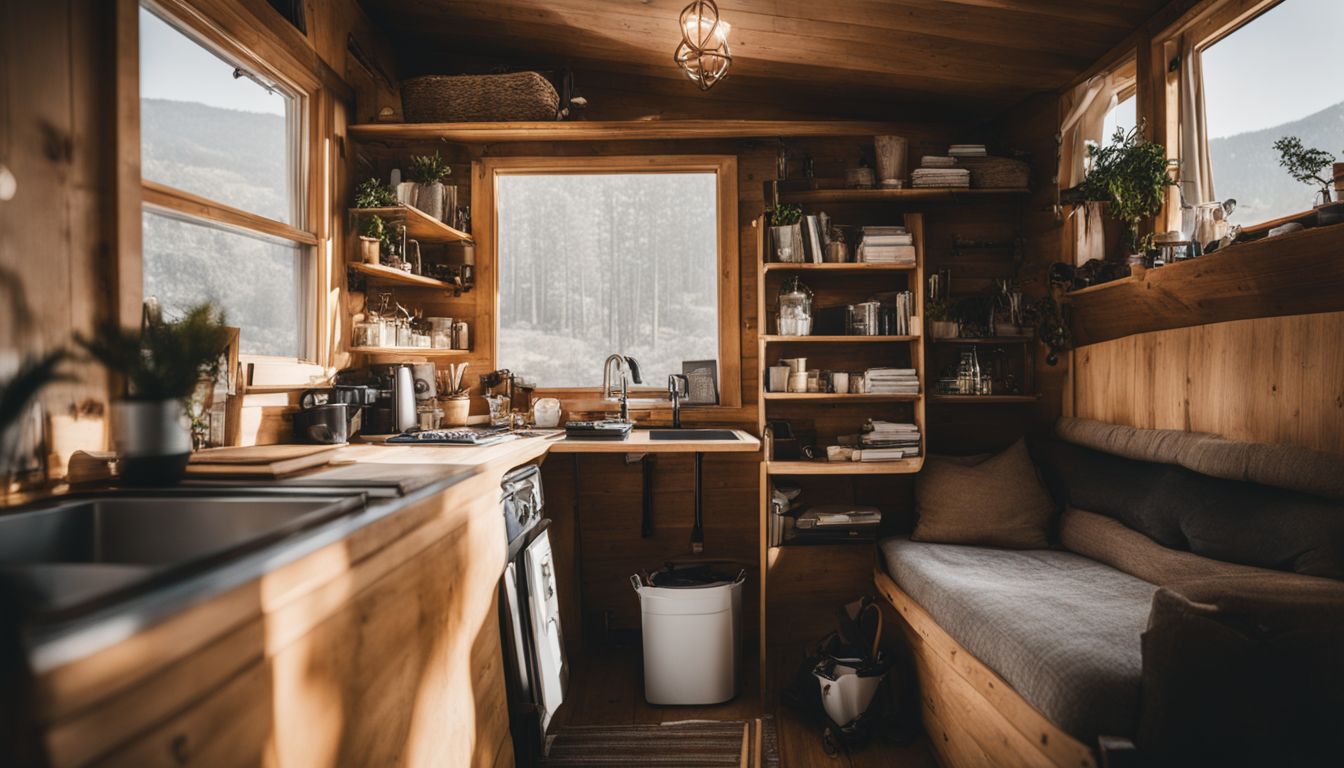
By: TinyNest Chronicles
Navigating the Challenges of Tiny House Living: A Closer Look at the Tiny House Movement
Many people today find themselves struggling with the high costs of traditional homes. The tiny house movement offers a solution, promising both simplicity and affordability. This article will explore how navigating the challenges of tiny house living can lead to a fulfilling lifestyle, touching on everything from space management to legal hurdles.
Stay tuned for insights that could change your life.
Key Takeaways
- Tiny houses help people save money and reduce their environmental footprint by promoting minimalist living. Every part of the house has a purpose, making it essential to choose what you truly need over what you want.
- Owners face challenges like limited space for stuff, dealing with zoning laws and building codes, and sometimes feeling isolated or cramped. It’s important to get creative with storage and understand local laws before starting.
- Living in a tiny home teaches self – reliance and helps focus on what matters in life. Despite the difficulties, it can lead to a more sustainable lifestyle that questions conventional views of success.
Understanding the Tiny House Movement

The movement from traditional homes to tiny living isn’t just about downsizing square footage. It’s a deep dive into minimalist living, where every inch of space serves a purpose. Tiny houses on wheels and stationary ones alike challenge us to live with less while focusing on what truly matters.
This shift was sparked by people wanting to reject materialism and simplify their lives for various reasons – from saving money to reducing their environmental footprint.
I’ve lived in a tiny home myself and it teaches you quickly the difference between needing something and simply wanting it.
Tiny homes may come as cute cottages or modern dwellings mounted on trailers, designed intelligently to maximize limited space. They often sit in contrast with zoning laws and building codes that favor traditional housing, pushing owners to think creatively about where they can park their mobile abodes or build them outright.
The lifestyle encourages embracing nature, fostering self-reliance, and striving for sustainable living – echoing early intentions of the tiny house movement as more than just an architectural trend but a philosophy questioning conventional views on success and happiness.
Challenges in Tiny House Living

Living in a tiny house poses challenges such as limited storage space, navigating laws and regulations, and dealing with isolation and personal space issues. These challenges can make the tiny house lifestyle difficult to manage for many individuals.
Limited Storage Space
Tiny houses mean less room for stuff. You’ll need to get creative with your belongings. Think multi-use furniture and vertical storage. Every inch counts in a home with few square feet.
Decluttering becomes part of daily life. You must choose between what you truly need and items you can live without.
Finding space for all your things challenges many tiny home owners. Custom shelves and hidden compartments help make the most out of every nook. It’s about smart use of space, not just cutting down on possessions.
This makes living small both a lifestyle choice and a lesson in minimalism.
Navigating Laws and Regulations
Understanding the rules for tiny homes can be tricky. Each town and city has its own set of laws. Before you build or park your house on wheels, you must check these regulations closely.
Many places have strict zoning and building codes that don’t always favor tiny homes, especially those not fixed to a permanent location.
Finding the right piece of land is another big step. You need land that allows tiny houses. It’s hard to get a mortgage for mobile tiny houses since banks see them as risky. Also, hooking up utilities like water and electricity can pose challenges if local laws are not in favor of off-grid living.
Look into each law carefully to make your tiny home dream come true without legal troubles.
Isolation and Personal Space Issues
Transitioning from the challenges of navigating laws and regulations in tiny house living, it’s important to address the isolation and personal space issues. Living in a tiny house can amplify feelings of isolation due to limited square footage and fewer opportunities for privacy.
This can especially impact those who are used to more spacious living arrangements. It’s crucial to find creative solutions for maximizing personal space within the confines of a tiny home, ensuring that occupants feel comfortable and connected despite the restricted living area.
The smaller size of a tiny house means residents may face difficulties finding seclusion or alone time, leading to potential strain on relationships and individual well-being. Incorporating multifunctional furniture, utilizing zoning techniques, and embracing outdoor spaces could aid in overcoming these challenges by providing necessary personal space within the compact environment.
These adjustments can help negate feelings of confinement while fostering a sense of autonomy within the unique setting of small-scale living.
Concepts: Isolation, Personal Space
Conclusion
The tiny house movement embodies a shift towards minimalism and sustainable living. Despite the challenges of limited space, navigating regulations, and potential isolation, the movement fosters self-reliance and environmental consciousness.
It encourages individuals to distinguish between needs and wants, challenging traditional ideas of happiness and success. While not suitable for everyone, tiny houses offer a unique opportunity to embrace a simpler, more mindful lifestyle guided by principles of self-sufficiency and ecological awareness.